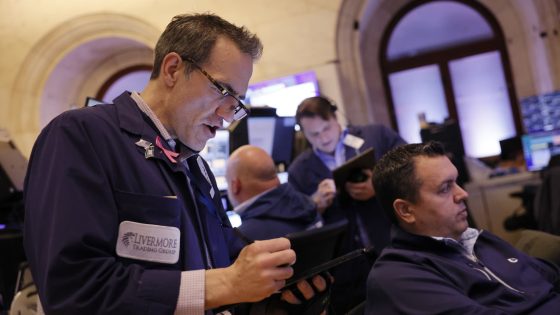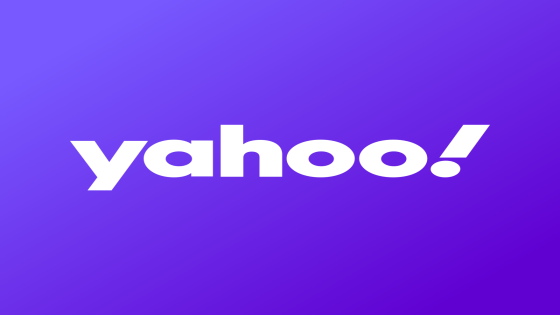New York won the day that Leon Rose took over the Knicks. I don’t mean that in, like, a global sense; I mean it literally. On March 2, 2020, the orange-and-blue scored a 125-123 upset win over the Houston Rockets:
To watch those highlights is to step into an extremely specific time machine. (And, considering it’d drop you off about a week before the coronavirus became extremely real in the NBA and the U.S. at large, maybe one better avoided.) The only member of the visiting team still wearing Rockets red is Jeff Green, and he was on two different teams before returning to Houston last season. Maurice Harkless, Wayne Ellington, Frank Ntilikina and Elfrid Payton all played at least 19 minutes for New York; they’re all out of the league now. (Not starting center Taj Gibson, though! He’s still around.) The Knicks’ leading scorer in that win was RJ Barrett — the No. 3 pick in the 2019 NBA Draft, New York’s consolation prize for missing out on Zion Williamson and Ja Morant, and, at the time, seemingly its best shot at finding a star.
The cupboard wasn’t bare when Rose took the reins: Barrett had shown some two-way promise, center Mitchell Robinson was finishing his second season in New York, and power forward Julius Randle was wrapping up his first. But he didn’t have a ton to work with as he inherited a team with the NBA’s fifth-worst record, circling the drain of its seventh straight sub-.500 season, and on its sixth head coach in that dismal span.
Year after year, the hoped-for heroes — those who made it to Madison Square Garden, like Amar’e Stoudemire, Carmelo Anthony and Phil Jackson, and those who never did, like LeBron James, Kevin Durant and Kyrie Irving — had never actually saved the day in one fell swoop. Fast-forward four summers, though, and the Knicks are coming off their first 50-win season in a decade, with a playoff series victory in two straight postseasons — the first time they’ve done that since the springs of 1999 and 2000. They kept one of the most coveted wings on the free-agent market in OG Anunoby and added another in Mikal Bridges, building what profiles as one of the NBA’s deepest, most talented eight-man rotations.
And on Friday, Rose and Co. agreed to terms with All-NBA point guard Jalen Brunson on a four-year, $156.5 million extension that secures the services of New York’s superstar point guard through at least the end of the 2027-28 season — arguably the biggest coup of this NBA offseason, and the capstone on a years-long, brick-by-brick, transaction-by-tedious-transaction process by which New York has built a pathway to sustainable success.
You’ve probably heard by now that the extension Brunson accepted amounts to about $113 million less than the maximum that he could have commanded from the Knicks next summer, had he played out this season and declined his player option for 2025-26 to enter unrestricted free agency before re-upping. You might’ve also heard that it’s really more like $37 million less, if you account for the possibility of Brunson opting out in 2028-29, after the influx of revenue from the NBA’s forthcoming $76 billion broadcast rights deal has begun to flow into the league’s financial structure.
By ’28-29, Brunson will have accrued 10 years of NBA service time, making him eligible to sign a new contract beginning at 35% of the salary cap. A full-freight five-year deal at that level would pay a projected $418 million. That accounting assumes a lot, of course — most notably that Brunson will still be producing at a level commensurate with a full-boat max at age 32, and that the Knicks would still be willing to pay him at that rate through age 37.
Not that it would be surprising for Brunson to have more faith and trust in New York’s braintrust and surroundings than some other stars would have in theirs, though. After all, it does consist of a team president in Rose who is both his godfather and the father of his agent, Sam Rose; a head coach in Tom Thibodeau who has known him since infancy and who employs as an assistant his father, Rick Brunson; and now, three of his best friends in former Villanova teammates Bridges, Josh Hart and Donte DiVincenzo.
“Jalen has often called the Knicks his family, and we are beyond proud to have him wear and represent our orange and blue for years to come,” Rose said in a team statement announcing Brunson’s extension. “Jalen has embraced every challenge since he’s come to New York and has been committed since day one to the vision and plan we set forth for the future of this team.”
That plan began in 2020, when Rose began his tenure by hiring Thibodeau to the head-coaching job for which he was born, and then used one of his first two draft picks as an executive on Immanuel Quickley, a spark-plug guard who’d bloom into a Sixth Man of the Year finalist — and, eventually, a co-headliner with Barrett in the deal that would bring Anunoby to Manhattan. Three months later, the Knicks sent Dennis Smith Jr. and a pair of future second-rounders to Detroit for longtime Thibs lieutenant Derrick Rose — an injection of instant offense off the bench who helped transform the Knicks into a playoff team, waking up the echoes at the World’s Most Famous Arena and introducing a new generation of basketball watchers (and, hell, basketball players) to what it looks like when MSG comes alive in the playoffs.
An attempt to build on that success flagged the following season, as a number of Rose’s moves — the additions of Kemba Walker and Evan Fournier, the re-signings of Rose, Nerlens Noel, Alec Burks and Taj Gibson, a trade-deadline deal for “second-draft” project Cam Reddish — didn’t produce the desired results. But Rose was able to quickly pivot, wheeling and dealing at the 2022 NBA Draft to turn one first-round pick into three future firsts while also setting up moves to offload the contracts of Walker, Noel and Burks … and, in the process, creating enough space to sign Brunson in unrestricted free agency.
On the same day, Rose signed Brunson, signed Isaiah Hartenstein and re-signed Robinson, creating the pick-and-roll battery that would power consecutive top-10 offenses and playoff appearances. Seven months later, Rose flipped Reddish and a 2023 first-round pick in a four-team deal that brought back Josh Hart — Brunson’s soulmate and a hand-in-glove fit for the hard-charging Thibodeau.
The move made Brunson pretty happy …
… and it wound up making Knicks fans happy, too. Hart became a vital source of rebounding, defense and transition chaos to help fuel New York’s return to the postseason and its first playoff series victory since 2013, before re-upping on his own four-year extension … in the same offseason that Rose got Donte DiVincenzo to take the midlevel exception to join his old Villanova buddies. DiVincenzo promptly turned into one of the highest-volume, highest-accuracy 3-point shooters in the NBA — a crucial floor-spacer, complementary ball-handler and defender throughout the Knicks’ run to the second round.
The track record that Rose and Co. have built of consistently finding ways to improve the roster, even when their best-laid plans don’t quite pan out — like turning Fournier and Quentin Grimes into Burks and Bojan Bogdanović, who wound up being the main matching salary in the Bridges deal — helps inform Brunson’s decision to take a bit less to give them a bit more leeway. It seems clear, too, that Brunson viewed eschewing the biggest possible bag next summer in favor of taking the biggest one he could get right now less as sacrificing tens of millions of dollars … and more like buying something with it.
Like the security of a contract that will push him over $240 million in career earnings — a prospect that might seem particularly attractive for an about-to-turn 28-year-old small guard who battled ankle and knee issues down the stretch of a season he finished in the top five in usage rate, touches per game and time of possession, and who ended the campaign with a broken shooting hand. And the chance to make it more likely that he plays on contending teams throughout his athletic prime:
I’m not sure there’s enough ways to express how massive Jalen Brunson taking this extension is for the New York Knicks.
A max level player earning ~20% of the cap will do wonders for team building.
This gives them a much stronger chance at keeping their top 8 players over the…
— Yossi Gozlan (@YossiGozlan) July 12, 2024
Brunson taking about $11.5 million less for 2025-26 than he could have had he waited gives New York significantly more room under the imposing second apron. That affords the front office more flexibility to maneuver as they look to continue improving the roster — like, say, by targeting another reserve with the $5.7 million taxpayer midlevel exception — and, perhaps most crucially, to address the status of Randle, a fascinating figure who has blossomed into a three-time All-Star and two-time All-NBA selection, who missed the Knicks’ final 49 games following a season-ending shoulder injury, and who holds a $30.9 million player option for ’25-26.
Brunson’s new price tag gives New York new options for how to proceed. If Rose and Co. want to explore moving Randle for similarly high-priced talent, they’re now more free to do so without fear of exceeding that second apron. And if they want to consider giving Randle a raise to stick around — he becomes eligible for an extension on August 3 — they can do that, too. Hell, maybe they do it at a similar sort of max-available-price-now, but well-below-max-on-the-open-market cost. It might not be the only such deal Rose has simmering: Brunson’s agreement became official on Friday, and by Monday, longtime NBA insider Marc Stein was reporting that “league sources say that the expectation now, furthermore, is that Bridges is likely to follow Brunson’s lead and sign a team-friendly deal of his own when it’s his turn to negotiate an extension,” which he’s eligible to do on October 1.
Even if Brunson’s decision doesn’t start any kind of trend, though, it has put the Knicks in a better position to achieve the objective he laid out after their loss to the Indiana Pacers in Game 7 of the Eastern Conference semifinals.
“I think we’re making positive strides,” he said. “We just need to make more.”
It remains to be seen whether they’ve made enough. The Knicks still have questions to answer — chiefly, how they replace Hartenstein, whose stellar play on his bargain two-year deal earned him a monster raise with a bona fide contender that proved too perfect to pass up, and whether what Rose and Co. have built is powerful enough to withstand a fully reloaded Celtics team that just dominated its way to the title.
But those are a much higher class of questions than any Knicks team has faced for much of the previous quarter-century. In March 2020, Rose took over a perennial sad-sack laughingstock; in July 2024, the Knicks justifiably believe that they’ve got a several-year window in which they can win the NBA championship. This is how a plan comes together: not all in one fell swoop, but step by step, brick by brick, and transaction by tedious transaction.
Source Agencies



